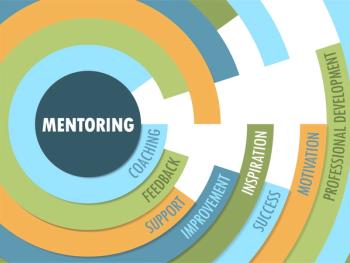- Vol 33 No 10
- Volume 33
- Issue 10
Get Well Soon-at Work
With the modern office environment comes another type of “climate change”-designed to shape workers psychologically.
An open-concept home was not very popular in the 50s (1950s, that is). Today, few homebuyers would consider anything else. The same cannot be said for the open office, which workers generally
I suspect most people “pretended” to like the open environment to keep their jobs, or at the very least, to go with the flow. Today, it is virtually unheard of to have your own office, the rationale being that open creates a better work environment . . . “better,” meaning
As a former business owner, I suspect the real motive behind open offices initially was the bottom line-less overhead, fewer surreptitious activities that could harm the company, increased accountability, and greater transparency.
Editors, writers, attorneys, and other
Alas, the open office is old news and let’s face it-practically speaking, the operational landscape has changed dramatically with the mobile nature of business. With
Molding of the mind
With modern corporate culture comes another type of “climate change”-and it is gaining momentum. Some companies have taken the open design concept and run with it, to shape workers psychologically-through wellness.
For example, the
It reportedly combines best practices in design and construction with medical and scientific research to set performance requirements in 7 categories relevant to occupant health and well-being: air, water, nourishment, light, fitness, comfort, and mind.
Since WELL v1 was launched in October 2014, the building standard has seen promising results. CBRE Group Inc.’s Global Corporate Headquarters in downtown Los Angeles became the
One year after occupancy, an employee survey showed:
• 92% of respondents reported that the new space created a positive effect on their health and well-being
• 94% said the new space has had a positive impact on their business performance
• 83% said that they felt more productive
Green gone global
The interest in WELL has continued to grow, with more than 250 projects now registered or certified under the standard in 23 countries worldwide.
“Given [that] we now spend more than 90% of our time indoors, it is becoming increasingly important to place people at the heart of design and construction, operations, and development decisions,” said Paul Scialla, Founder of the IWBI.
The bottom line
If we can improve physical and mental health on location, despite the distractions of an open office, working at work might be a good thing. Although I’m still a proponent of telecommuting-it eases stress, increases productivity, and reduces our carbon footprint-the WELL idea is a step in the right direction.
10 ways to get well on the job
[[{"type":"media","view_mode":"media_crop","fid":"53462","attributes":{"alt":"","class":"media-image media-image-right","id":"media_crop_3737710001224","media_crop_h":"210","media_crop_image_style":"-1","media_crop_instance":"6684","media_crop_rotate":"0","media_crop_scale_h":"170","media_crop_scale_w":"124","media_crop_w":"153","media_crop_x":"3","media_crop_y":"42","style":"float: right;","title":" ","typeof":"foaf:Image"}}]]Here are 10 optimization standards that may promote wellness (and beat
1. Advanced lighting design that alters with daily
2. Active design, such as centralized filing cabinets to encourage physical activity throughout the day
3. Mindful design (eg, artwork that creates aesthetically pleasing spaces that can help building occupants derive a measure of comfort or joy from their surroundings)
4. Higher standards for water quality
5. Ergonomic design
6. Acoustic planning
7. Active transportation support, such as basic bike tools for commuting cyclists
8. Optimized spaces for both work and rest, including spaces such as tranquility lounges to take a break and rejuvenate the mind
9. Better access to health and
10. Active workstations, including treadmills and/or bicycle desks
Related content:
This article was originally posted on 9/9/2016 and has since been updated.
Articles in this issue
about 9 years ago
Brief Cognitive Behavioral Therapy Interventions for Psychosisabout 9 years ago
Exploring the Psychosis-Depression Interface: Clinical Implicationsabout 9 years ago
“Doctor, Am I Gay?” A Primer on Sexual Identitiesabout 9 years ago
Outside the Pill Box: The Systems-Based Practice of PsychiatryNewsletter
Receive trusted psychiatric news, expert analysis, and clinical insights — subscribe today to support your practice and your patients.


















